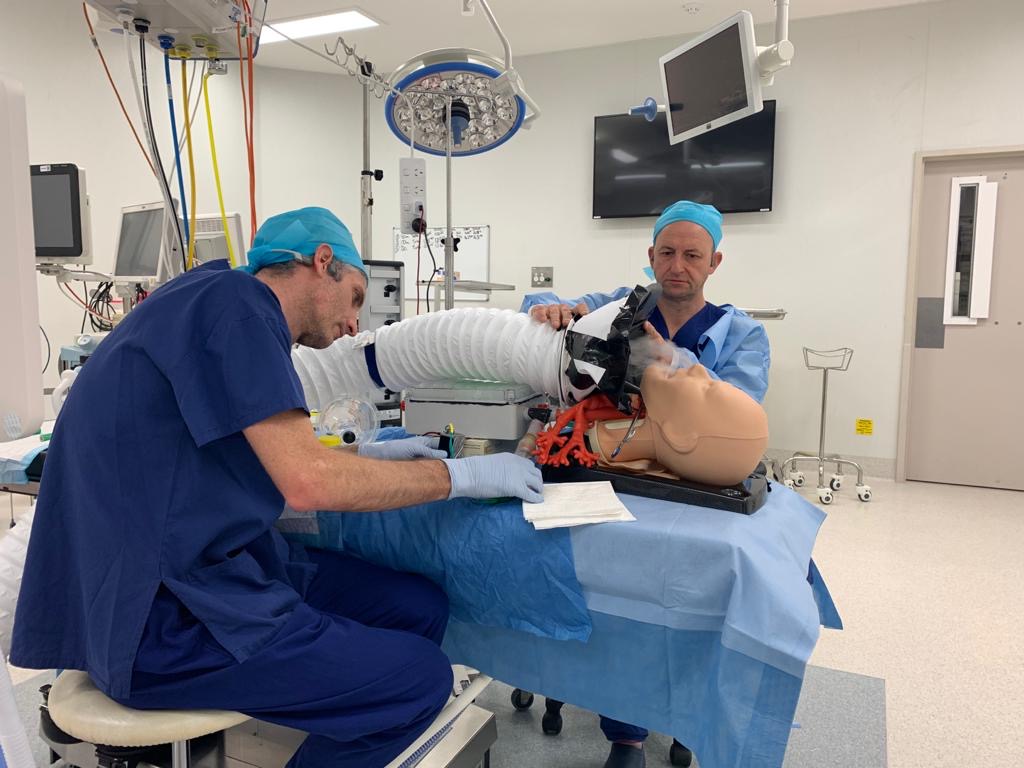Background
COVID 19 has proven to be a formidable pathogen that can be transmitted by (fomite), droplets and aerosolised virus. Health care workers are at increased risk of infection and are overrepresented in the infected population. PPE has been demonstrably flawed and as anaesthetists, we are expected to stand in harms way during so called “aerosol generating procedures”. Investigators in this group hypothesised that the building’s own high flow ventilation extraction could potentially be manipulated to extract and filter exhaled air and aerosols much closer to the patient and may therefore present a means of reducing risk to staff. This epiphany led to the development of the prototype “Marriott extractor” and the experimental technique laid out in these pages.
The scientific literature around the study of exhaled aerosol movements in humans is thin. Previous investigators have used sheet laser light to illuminate “exhaled” smoke in mannequins and determine its spread in laboratory conditions. The use of particle counters has been described in other studies looking to quantitatively assess aerosol numbers and behaviours. In our attempts to better understand how airflows in operating theatres might be better harnessed we have, by necessity, developed a sophisticated experimental method to test the use of high flow local extraction in a range of clinical settings.
The formal research discussed here was borne out of a collaboration with the University of Western Australia and seeks to assess the efficacy of redirecting theatre airflow in reducing the aerosol contamination which staff may be exposed to. The findings have wider implications for the care of all Covid 19 patients throughout the setting of advance healthcare facilities and has highlighted some simple interventions that can be easily instituted in most settings to reduce risk to all who may be at risk from airborne transmission of pathogens. This work has been submitted for publication in peer reviewed literature
Experimental outline
A negative pressure human lung simulation apparatus was used in conjunction with an aerosol generating device to release aerosols in to a clinical area in a repeatable and physiologically typical way.
The behaviour of this aerosol plume under different conditions, was quantitatively examined using high resolution videography of Laser sheet light projected through the vapour. Further quantitative assessment of aerosol distributions were made using a commercially available particle counter in real time at multiple locations in the operating theatre.
The ultimate aim of both series of experiment was to determine the potential efficacy of HFLE in reducing risk to HCWs in dealing with Covid 19 patients.
Researchers

Dr Logan Marriott MBCHB FANZCA, Fiona Stanley and Fremantle Hospitals
Dr Matthew Harper MBBS, BSc FRCA, FANZCA, Fiona Stanley and Fremantle Hospitals
Prof Tongming Zhou, University of Western Australia
Chenlin Sun, University of Western Australia